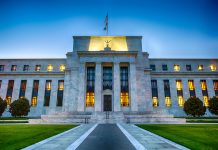In focus today
In Germany, we get the ZEW index for October, which will give an update on how investors asses the economic situation in Germany. In September, the assessment of the current situation declined to the lowest level since Covid, and expectations declined in a sign of the weakness in the German economy.
In Sweden, the final inflation figures (08:00 CET) are likely to be in line with the preliminary estimates, that is, CPIF at 1.1% and CPIFxE at 2.0%. Instead, focus will be on the details behind the headline numbers. Separately, Public Employment Service releases labour market data for September this morning, where the trend has been one of a higher unemployment rate. Finally, the Riksbank board members testify before the Riksdag Finance Committee at 09:00 CET. Since the last forecast and monetary policy meeting, Swedish growth and inflation data has been in line with or slightly stronger than Riksbank forecasts. Hence, we expect that they will communicate that the baseline of 25bp in November still holds.
We get the UK labour market report for August/September, which is expected to show broad easing in the labour market and wage growth. While still elevated, wage growth excluding bonus is expected to ease to 4.9% 3M/YoY (from 5.1%) and the unemployment rate is expected to remain steady at 4.1%. The notion of a cooling labour market supports a cut from the Bank of England in November.
We also keep an eye on CPI data out of Canada and New Zealand.
Economic and market news
What happened overnight
In China, a Caixin Global report said that China may raise USD 850bn over the next three years to finance its awaited fiscal stimulus package. The report comes after the Chinese finance minister Lan Fo’An announced on Saturday that China plans to significantly increase debt to stimulate the economy.
In the US, Fed’s Waller called for more caution on interest rate cuts going forward. Waller said that the US economy is in a sweet spot, and Fed’s job is to keep the economy there, as labour market remains healthy, and inflation is coming back to the 2% target. After cutting interest rates by 50bp at the last meeting Fed now needs to continue at a deliberate pace, Waller said. Fed’s Kashkari said that it would be appropriate to consider modest rate cuts going forward, while Fed is on the edge of the 2% inflation target.
What happened yesterday
OPEC revised down their forecast for global oil demand for 2024 and 2025. Now OPEC expects daily demand to increase by 1.93m barrels, which are 106,000 fewer than in their previous estimates, while for 2025 the demand forecast has been decreased by 100,000 barrels per day. In recent days markets have speculated in weak Chinese demand as a potential reason for lower oil demand. Later yesterday, Washington Post reported that Israeli prime minister Netanyahu had told the US government that an Israeli response to Iran’s 1 October attack would not target energy infrastructure such as oil but rather military targets. Oil prices ended last week at nearly 79 USD/barrel, and this morning it has dropped to around 75.3 USD/barrel.
In China, we received data on exports and credit growth. Export growth fell to 2.4% year- on-year from 8.7% in August, below the consensus forecast of 6.0%, and credit growth remained soft. Combined with the low core inflation in September the data highlights the need for further stimulus.
In the Middle East, Israel expanded its attack in Lebanon to the northern town of Aitou, where at least 21 were killed. Until now Israel has hit primarily southern cities and suburbs of Beirut.
FI: European rates traded in a very tight range yesterday (with a marginal upward trend of 2bp across the curve) with US out for Columbus Day, no key data releases and the ECB meeting on Thursday. Front-end pricing was steady at 23bp for the October meeting and a cumulative 150bp by year-end 2025. Bund-ASW hit new lows at 22.3bp (-2bp on the day).
FX: In a relatively slow start to the week the USD has been the clear outperformer among FX majors while ZAR and NOK have traded heavy. EUR/USD has moved just below 1.09 while EUR/NOK is back close to 11.80. USD/JPY continues to trade just below 150 while EUR/GBP is setting new weekly lows amid speculations of an aggressive cutting cycle from the BoE easing. Finally, the recent range trading from EUR/SEK continues with the cross still being stuck in the mid-11.30s.













